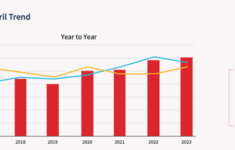The Q1 2016 edition of Carrier Management focuses on two broad themes: the state of the industry and talent management. But anyone glancing at our feature titles might think our main focus is technology.
- The Underwriting Staffing Challenge: Recruitment Strategies for a Vanishing Talent Pool
- Tasks Performed by Agents, Underwriters and CEOs Can Be Automated: McKinsey Research
- How Virtual Agents Powered By Artificial Intelligence Can Transform Insurance
- Insurance CXOs Fearing Uberization Eye ‘Cognitive Computing’ Potential: IBM Survey
- Welcome to the Future
- Reporter’s Notebook: Is Insurance the Economic Engine for the Internet of Things?
- The New Venture Capitalists: Insurance Companies
- Careers Reimagined: Is the Insurance Industry Ready for Our Second Act?
- Underwriting for the Modern Age
- What Investor Activism Means for Insurers—Those Under Attack and Those That Aren’t
In fact, all three subjects are becoming more intertwined—a trend clearly evident at this year’s Property/Casualty Insurance Joint Industry Forum, where a panel of outside experts who convened to discuss the state of the industry talked instead about the impact of technology.
Topics discussed: How is the industry coping with challenges and opportunities of advanced analytics, the burgeoning Internet of Things, disrupters creating online distributors and auto accident avoidance technology that’s potentially eliminating an entire line of business, as well as industry jobs?
Answer: It’s fair to say the industry is in a state of flux—and its existing talent pool is being swept up in a wave of technological change occurring alongside a wave of consolidation and individual company cost-cutting and restructuring initiatives. Underwriting talent is at a premium today. But will that be true in years to come? Will agents be the new underwriters? Will robots be the new agents?
Here’s how Arch Capital’s chief executive, Constantine (Dinos) Iordanou, summed up not just the state of the industry but the state of the world at the Forum:
“This is going to be the decade of robotics on the manufacturing side and the decade of predictive analytics on the financial services side…It’s good for society but not great for business. Exposures are not from factories. They’re in robotics. There are less accidents…The smaller the losses, the smaller the [insurance] business.”
He continued, noting that jobs being created are for personal services rather than manufacturing. “I’m not so sure that I want a robot to be cutting my hair…Those are the jobs we’re creating—restaurant jobs, personal trainers, etc.”
Iordanou echoed the thoughts of Bank of England Chief Economist Andy Haldane, who likewise sees hairdressers as relatively safe in the digital age. Haldane’s views are included in our article, “Tasks Performed by Agents, Underwriters and CEOs Can Be Automated: McKinsey Research,” which also summarizes McKinsey’s data on insurance industry activities that are automatable.
Another recent McKinsey analysis (“Automating the insurance industry,” January 2016) said that within “marketing and sales support for digital channels” and “newly created analytics teams” will be “engines of job creation” in insurance. The bad news: 25 percent of the industry’s full-time positions will be consolidated or replaced by 2025, with those in operations and administrative support being most vulnerable.
“That’s neither a negligible amount of job loss nor an unimaginably distant time frame,” McKinsey said.
Change is underway. Consider remarks from AIG CEO Peter Hancock during a Jan. 26 conference call describing how a refocused AIG impacts employees:
“We’ve been going through a very thorough talent analysis over the course of the last four years…As we have narrowed our focus on geographies, products and client segments…, we [had] a very well-informed view of what is the right blend of institutional knowledge…as well as knowledge of new techniques—data analytics and so on.”
Cost savings going forward, he said, will “come through a very well-thought-through and planned optimization of our human capital.”




















 High Inflation Grips Service Industries Even as Overall Rate Slows
High Inflation Grips Service Industries Even as Overall Rate Slows  FEMA Fires Manager Who Told Staff to Skip Homes With Trump Signs
FEMA Fires Manager Who Told Staff to Skip Homes With Trump Signs  The Compliance Imperative: How Louisiana’s House Bill 672 Is Reshaping the MGA and TPA Landscape
The Compliance Imperative: How Louisiana’s House Bill 672 Is Reshaping the MGA and TPA Landscape  InsurTech Innovator Has High Hopes for Ascend
InsurTech Innovator Has High Hopes for Ascend 




